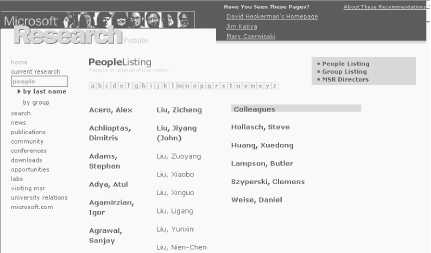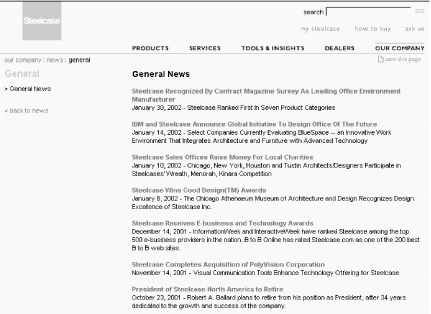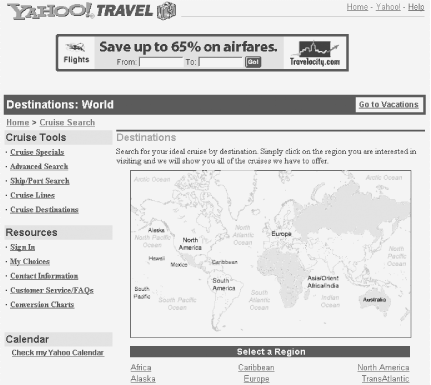WebReference.com - Part 1 of chapter 5 from Information Architecture for the World Wide Web, 2nd Edition. From O'Reilly (5/8).
[previous] [next] |
Information Architecture for the WWW, 2E. Chapter 5: Organization Systems
Alphabetical
An alphabetical organization scheme is the primary organization scheme for encyclopedias and dictionaries. Almost all nonfiction books, including this one, provide an alphabetical index. Phone books, department store directories, bookstores, and libraries all make use of our 26-letter alphabet for organizing their contents. Alphabetical organization often serves as an umbrella for other organization schemes. We see information organized alphabetically by last name, by product or service, by department, and by format. Figure 5-2 provides an example of a departmental directory organized alphabetically by last name.

Figure 5-2: A directory of people at Microsoft Research
Chronological
Certain types of information lend themselves to chronological organization. For example, an archive of press releases might be organized by the date of release. Press release archives are obvious candidates for chronological organization schemes (see Figure 5-3). The date of announcement provides important context for the release. However, keep in mind that users may also want to browse the releases by title, product category, or geography, or to search by keyword. A complementary combination of organization schemes is often necessary. History books, magazine archives, diaries, and television guides tend to be organized chronologically. As long as there is agreement on when a particular event occurred, chronological schemes are easy to design and use.

Figure 5-3: Press releases in reverse-chronological order
Geographical
Place is often an important characteristic of information. We travel from one place to another. We care about the news and weather that affects us in our location. Political, social, and economic issues are frequently location-dependent. With the exception of border disputes, geographical organization schemes are fairly straightforward to design and use. Figure 5-4 shows an example of a geographical organization scheme. Users can select a location from the map using their mouse.

Figure 5-4: A geographical organization scheme
[previous] [next] |
Created: September 23, 2002
Revised: September 23, 2002
URL: https://webreference.com/authoring/design/information/iawww/chap5/1/5.html


 Find a programming school near you
Find a programming school near you